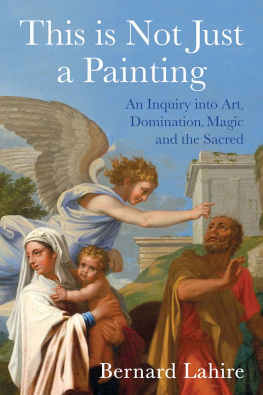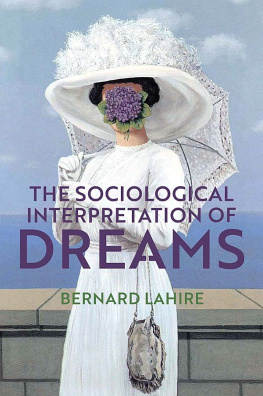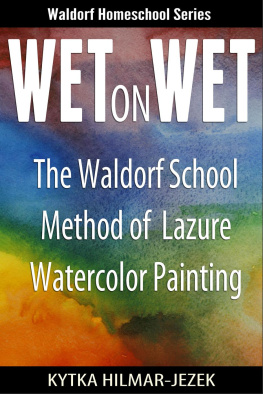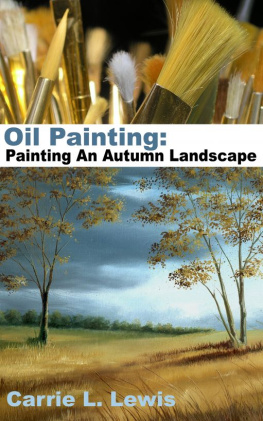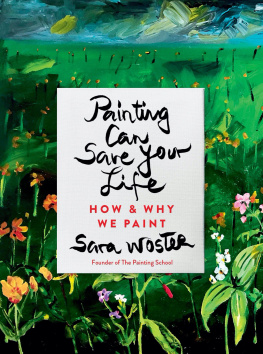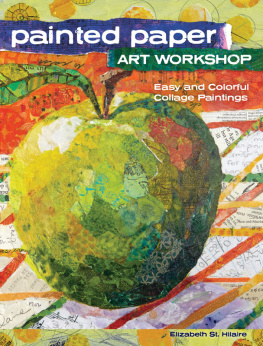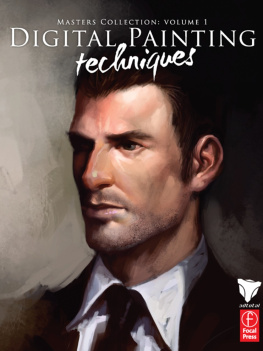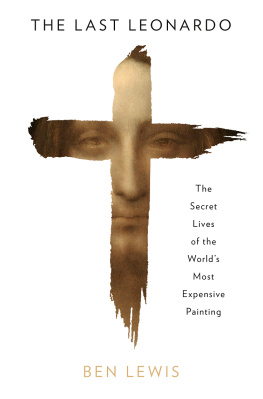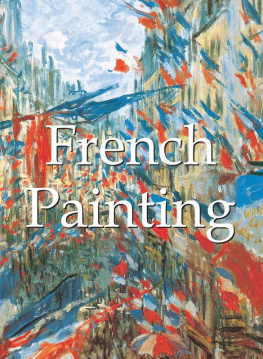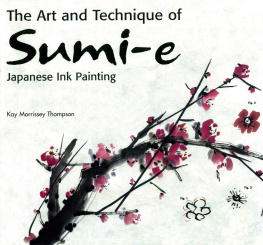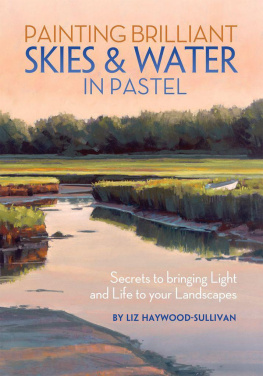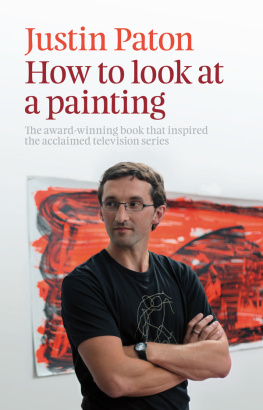CONTENTS
Guide
Pages

To my son Nathan, whose creative spirit and sense of humour delight me.
This is Not Just a Painting
An Inquiry into Art, Domination, Magic and the Sacred
Bernard Lahire
Translated by Helen Morrison
polity
First published in French as Ceci nest pas quun tableau. Essai sur lart, la domination, la magie et le sacr ditions La Dcouverte, Paris, France, 2015
This English edition Polity Press, 2019
The translation of this work has benefited from the support of the Institut Universitaire de France
Polity Press
65 Bridge Street
Cambridge CB2 1UR, UK
Polity Press
101 Station Landing
Suite 300
Medford, MA 02155, USA
All rights reserved. Except for the quotation of short passages for the purpose of criticism and review, no part of this publication may be reproduced, stored in a retrieval system or transmitted, in any form or by any means, electronic, mechanical, photocopying, recording or otherwise, without the prior permission of the publisher.
ISBN-13: 978-1-5095-2871-4
A catalogue record for this book is available from the British Library.
Library of Congress Cataloging-in-Publication Data
Names: Lahire, Bernard, author. | Translation of: Lahire, Bernard. Ceci nest pas quun tableau.
Title: This is not just a painting : an inquiry into art, domination, magic and the sacred / Bernard Lahire.
Other titles: Ceci nest pas quun tableau. English
Description: English edition. | Medford, MA : Polity, 2019. | Includes bibliographical references and index.
Identifiers: LCCN 2018025192 (print) | LCCN 2018026191 (ebook) | ISBN 9781509528714 (Epub) | ISBN 9781509528691 (hardback)
Subjects: LCSH: Poussin, Nicolas, 1594?-1665. Flight into Egypt. | Aesthetics. | Mysticism and art. | Art appreciation.
Classification: LCC BH39 (ebook) | LCC BH39 .L22813 2018 (print) | DDC 759.4--dc23
LC record available at https://lccn.loc.gov/2018025192
The publisher has used its best endeavours to ensure that the URLs for external websites referred to in this book are correct and active at the time of going to press. However, the publisher has no responsibility for the websites and can make no guarantee that a site will remain live or that the content is or will remain appropriate.
Every effort has been made to trace all copyright holders, but if any have been overlooked the publisher will be pleased to include any necessary credits in any subsequent reprint or edition.
For further information on Polity, visit our website: politybooks.com
Acknowledgements
I would first of all like to thank Sylvie Ramond, director of the Muse des Beaux-Arts de Lyon who initiated this project. Thanks also to Agns Cipriani, development officer for the Muse des Beaux-Arts de Lyon, who facilitated our access to the museums archives.
I would also like to thank all those who agreed to be interviewed. In alphabetical order: William Bourdon, Agns Cipriani, Michel Colonna Ceccaldi, Jean-Pierre Cuzin, Yves Di Domenico, Isabelle Dubois-Brinkmann, Hubert Duchemin, Franois Duret-Robert, Richard Pardo, Vincent Pomarde, Pierre Rosenberg, Henri Zerner and the son of the original owner of the painting now in the Muse des Beaux-Arts de Lyon.
During my long period of research, I benefited from the scientific collaboration of Graldine Bois, who interviewed most of the major actors in connection with the recent history of The Flight into Egypt and who put together all the various documentation needed for a historical reconstruction of Nicolas Poussins fame.
I have been fortunate to benefit from contact with various colleagues, including Samuel Coavoux (Centre Max Weber) and Marianne Woollven (Universit de Clermont-Ferrand), Emmanuel Renaut and Claude Gautier (ENS de Lyon), Frdric Vandenberghe (IESP of the State University of Rio de Janeiro), Mathieu Hilgers (ULB, Belgium) and Felice Dassetto (Universit catholique de Louvain/Acadmie Royale de Belgique).
This research would not have been possible without the help of several groups of students, all participants in the Atelier Poussin, at the cole Normal Suprieur de Lyon, during the academic years 2008/2009, 2009/2010, and 2010/2011. I am all too aware that I would never have had the courage to embark on a project so fraught with risks because of its sheer historical scope, the constant requirement to step outside the specialized domains and the multiple scientific implications had that risk not been shared within the context of this teaching.
There are two main approaches to teaching at university level. One is based on a distinction between a teacher who knows and students who learn, and the other places teacher and learners in the same uncertain situation, where the only advantage held by the former is to have had more experience sailing these uncharted seas than the young crew members embarked on the same voyage. There is something reassuring about the cold knowledge which is transferred in the first kind of teaching. There it is: objectivized in the research texts, commentated on in the more scholarly texts or works, presented by the teacher, and the student who wishes to appropriate it can devote all the time required for the task by reading and then re-producing in an oral or written form the fruits of his or her study. Hot knowledge can be destabilizing, emerging as it does somewhat unpredictably throughout the academic year, but it offers far greater opportunities for scientific minds to develop. It was this second type of teaching that the students who participated in the Atelier Poussin were confronted with: a mix of genuine case studies and theoretical or methodological commentary, a mobilization of authors or texts depending on the variable needs of the research, the sense of helplessness or of ignorance which marks the different stages of a research project and which sets the course of tasks yet to be achieved, etc.
My thanks therefore go to: Nadge Conte, Barthlemy Durrive, Mava Gonzales, Malys Lascour, Anas Lemoalle, Aurlia Lon, Christian Marcucci, Florian Milesi, Tiphaine Parot, Adlade Ploux-Chilles, Mathilde Provansal, Pierre Royole Degieux, Anne-Camille Seyssel, Christelle Siboni and Marine Tregan (participants in the Atelier Poussin in 2008/2009, ENS de Lyon); Marie du Boucher, Lisa Marx, Claire Oppenchaim, Louise Piguet and Mathilde Provansal (participants in the Atelier Poussin in 2009/2010, ENS de Lyon); Laura Cappelle, Johan Hernandez, Lucie Jgat, Clmence Perronnet, Claire Piluso, Luisa Salieri and Ccile Thom (participants at the Atelier Poussin in 2010/2011, ENS de Lyon).
I am also indebted to the Rhne-Alpes region, which offered financial support for the first two years of this research in the context of Cluster 13 Cultures, patrimoine et cration (Culture, heritage and creation). Unfortunately, however, those national authorities capable of funding research, who often tend to favour the large-scale projects (multi-team, multi-disciplinary, international, etc.) often based on compromises, and loose arrangements or consensus, could not be approached for such a project. The more risky and unusual the project and the more it differs from the standard type of project, the less likely it is to be the result of inter-team collaboration. A few isolated but closely-knit researchers can, in my view, achieve far more than loose groupings of teams or laboratories, which are often forced to get together in order to finance research and to keep their staff busy. And, given how difficult it is to get funding for science outside this carefully organized bottleneck, it seems to me that scientific life is harder now than it was in the past. Reversing the order of priorities, researchers tend to favour research projects they know are likely to be funded rather than seek funding for scientifically powerful projects, which have been devised without any consideration as to their potential to be financed.

